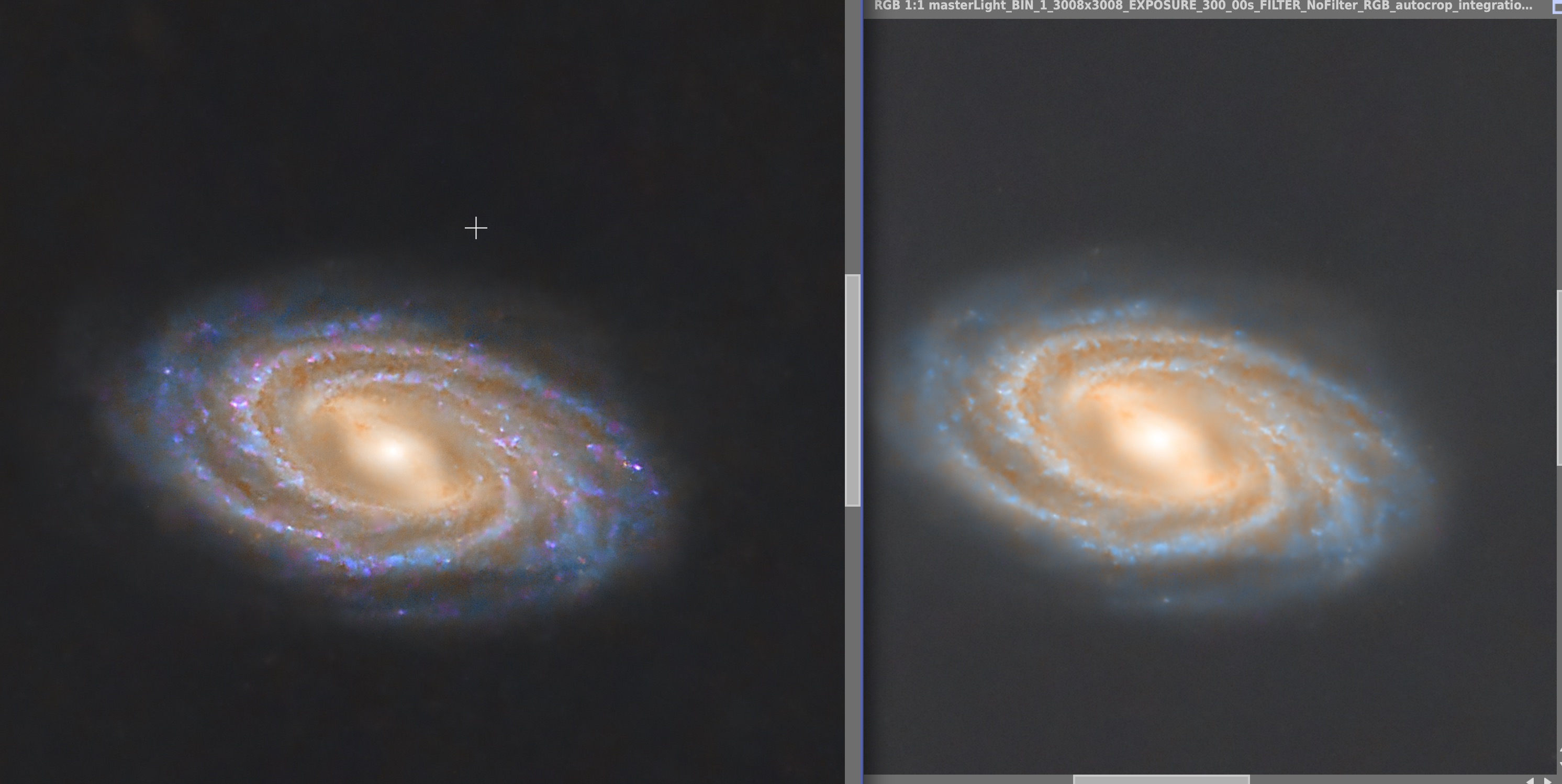Thanks for everyone's help.
Daniele Borsari:
My opinion is that, on the drizzled image, the star removal process managed to extract the stars better and preserve the Ha regions. On the non-drizzled image star removal removed both the stars and the Ha regions (probably because with half the resolution they become small and look like stars).
Regarding colors, if you use some kind of photometric color calibration, they obviously rely on stars and drizzle (as written on PixInsight documentation) is the only way to preserve photometry with OSC, and the calibration process may give different results.
In addition if you don't need drizzling 2x the resolution, you could just drizzle 1x or resample by 50% the final image.
Daniele
That's a good point. I'm not sure that I masked the galaxy before removing the stars. I'll have a look into this after work and report back. Thanks for the info.
Pedro A. Sampaio:
I see that you use a OSC camera. In your case, I think you should always use the CFA Drizzle (at 1x, you you are properly sampled, or 2x, if you are undersampled).
CFA drizzle on proper OSC color data means that PI reconstructs the color data using a drizzle algorithm instead of the CFA debayer. Debayering introduces less color fidelity than CFA Drizzle (which, according to some experts, can even recover the color fidelity close to what you would get when shooting mono, though it is a somewhat controversial and heated topic). There are several threads on this subject here and on CloudyNights on the subject.
So answering your question, I think it is very well possible that you CFA Drizzled image may have more color fidelity than the one where color was constructed by debayering.
That's very insightful, thanks so much. I just thought that drizzling was only used to combat under sampling and to increase the pixel size of the image. This is new to me so I'll re-stack with a 1x drizzle applied and report back. Is this all I need to do (Screenshot attached)?



